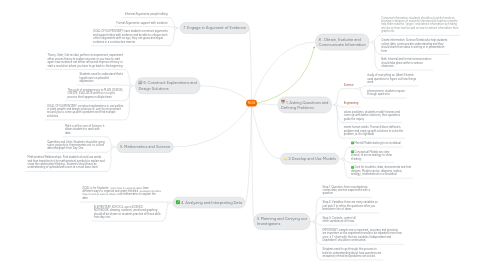NGSS
저자: Leigh Brunas


1. 6. Construct Explanations and Design Solutions
1.1. Theory: Start, Get an idea, perform an experiment, experiment either proves theory to explain universe or you have to start again; new evidence can either refine and improve a theory or start a revolution where you have to go back to the beginning
1.2. Students need to understand that a hypothesis is a plausible explanation
1.3. The cycle of engineering is to PLAN, DESIGN, CREATE, EVALUATE and this is a cyclic process that happens multiple times
1.4. GOAL OF ELEMENTARY: construct explanations ie. owl pellets or plant growth and design solutions ie. use the environment around you to come up with a problem and find multiple solutions.
2. 4. Analyzing and Interpreting Data
2.1. GOAL is for Students: * learn how to analyze data * learn different ways to organize and graph the data * evaluate the data they found as well as others * use mathematics to explain the data
2.2. ELEMENTARY SCHOOL: use a SCIENCE NOTEBOOK: drawing, numbers, words and graphing should all be shown so students practice all these skills from day one.
3. 7. Engage in Argument of Evidence
3.1. Informal Arguments: people talking
3.2. Formal Arguments: support with evidence
3.3. GOAL OF ELEMENTARY: have students construct arguments and support ideas with evidence and be able to critique each other's arguments with no ego, they can guess and argue evidence in a constructive manner.
4. 5. Mathematics and Science
4.1. Math is at the core of Science: it allows students to work with data
4.2. Quantities and Units: Students should be using rulers, projectors, thermometers etc. to collect data and graph from Day One.
4.3. Mathematical Relationships: First students should use words and then transition to the mathematical symbols to explain and show the relationship/thinking. Students should have an understanding of spreadsheets even at a most basic level.
5. 1. Asking Questions and Defining Problems
5.1. Science
5.1.1. study of everything ex. Albert Einstein used questions to figure out how things work
5.1.2. phenomenon: students inquire through questions

